Taking Bioethics “to the Next Level”
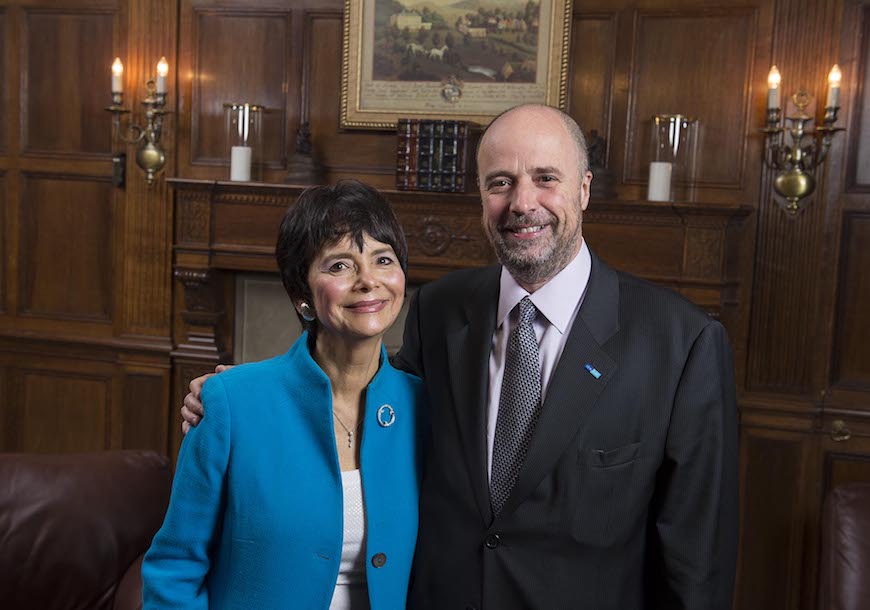
When University trustee Andreas C. Dracopoulos endowed the Berman Institute’s directorship in 2014, it was widely considered to be the first of its kind in the relatively young field of bioethics.
“Mr. Dracopoulos’ extraordinary generosity further secures the Berman Institute’s future. It will enable us to multiply the impact of our work and mission, helping to shape and respond to the pressing bioethics issues of this generation, and those to come,” says Ruth R. Faden, inaugural Dracapoulos Director and the Philip Franklin Wagley Professor of Biomedical Ethics.
Bioethics as a field is only a few generations old, and thus does not have the same history with philanthropists as other areas of health and academics, Faden explains. Generosity and foresight like Dracopoulos’ is helping to establish and fortify the field as a permanent feature of the academy, she says.
“I don’t think of this donation as a gift, because the Berman Institute has earned this. Rather, I consider it a recognition of what the Institute has already achieved,” says Dracopoulos. “It’s my hope this will spur both the University and the Berman Institute to take bioethics at Johns Hopkins to the next level.”
Deepening our Capacity for Collaboration
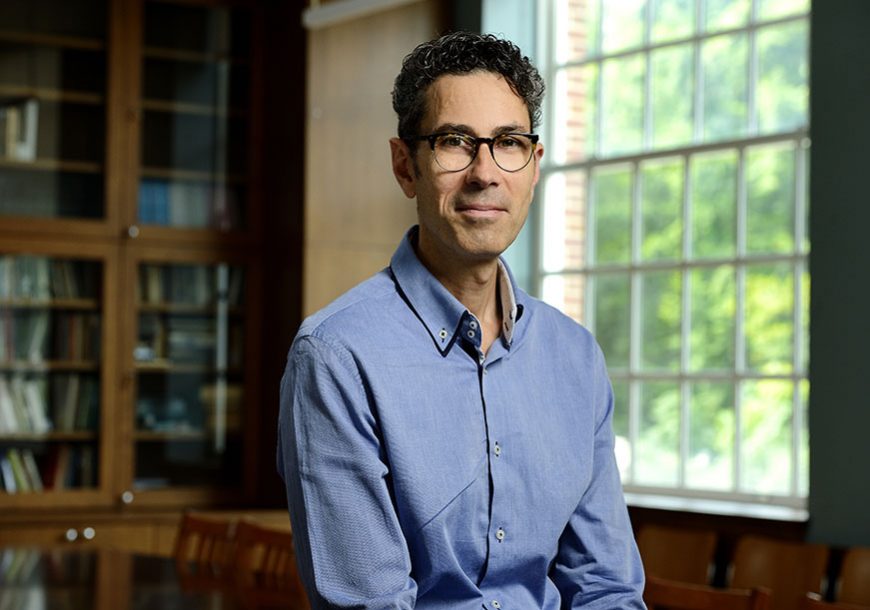
To take on enormous challenges — and indeed to understand and solve complex problems — Johns Hopkins must find faculty members and develop students who are capable of in-depth specialization yet prepared to work across disciplines that have traditionally been regarded as separate.
Such transformational thinking underlies the Bloomberg Distinguished Professorships, 50 unique faculty positions created through a landmark gift alumnus, philanthropist, and three-term New York City Mayor Michael R. Bloomberg, Engr ’64.
The Bloomberg Distinguished Professorships help deepen the university’s capacity for interdisciplinary collaboration, bringing new leaders and their ideas to our campuses, and training new collaborative scholars from first-year students to post-docs.
Bloomberg Distinguished Professors work with hundreds of undergraduate students, exposing these future leaders to new modes of thinking and discovery while building intellectual bridges, breaking down academic silos, and serving as a model for the future of academia at Johns Hopkins and around the world.
Fighting for Health and Human Rights
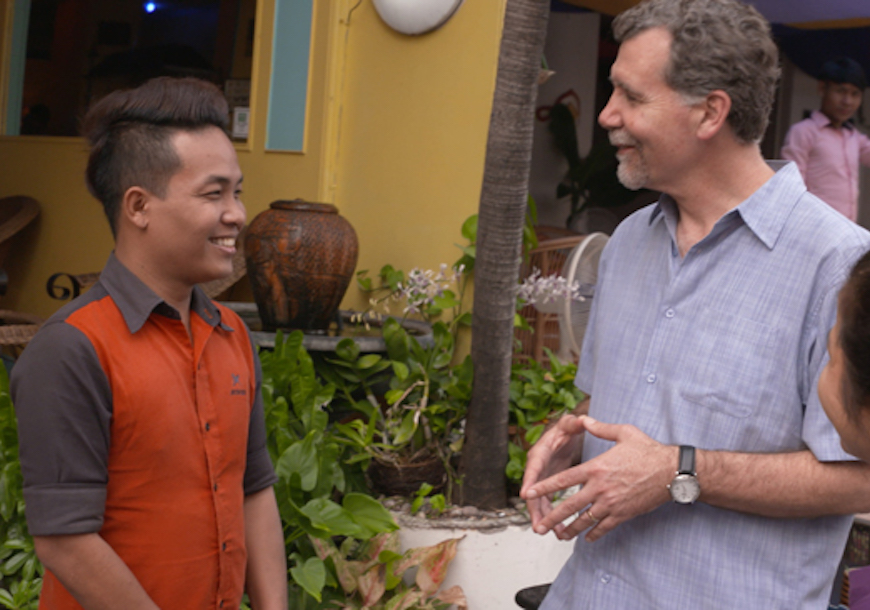
As the founding director of the Center for Public Health and Human Rights (CPHHR) at the Bloomberg School, Chris Beyrer, MD, MPH ’91, has dedicated his career to fighting for marginalized communities, particularly for those suffering with HIV and AIDS internationally and nationally.
“What I have really come to understand as a practicing infectious disease epidemiologist is that not paying attention to the human rights context, to the social justice issues, is not good science,” says Beyrer, who has also done extensive health outreach in Thailand and South Africa.
In 2016, he was named the inaugural Desmond M. Tutu Professor of Public Health and Human Rights, an award which, among other things, will allow additional support for junior colleagues.
“Being the Tutu Professor is one of the great personal honors of my life,” he says. “Archbishop Tutu has been a very instrumental and inspirational figure for me.”
Tutu and Beyrer have collaborated on efforts against LGTB discrimination in Uganda, the Darfur genocide in Sudan, and the persecution of Nobel laureate Aung San Suu Kyi in Burma, as well as mobilizing following the economic and health care system collapse in Zimbabwe in 2008.
“I’m elated,” said Tutu about Beyrer’s being bestowed the professorship in his name. “It’s quite crucial that people see the provision of health as an issue,” he adds.
Donors to the professorship, Ed and Kathy Ludwig — who first met Beyrer on a trip to Thailand in 2000 — say the two make a great pair, as both are leaders in the human rights field.
“Chris is a gifted intellectual, gifted doctor, researcher. In addition to being tireless, he is absolutely courageous,” says Ed Ludwig, emeritus chair of the Bloomberg School Health Advisory Board.
“His values align with Desmond Tutu’s values,” adds Kathy Ludwig, who serves as chair of the CPHHR Advisory Committee. “They do what they say they’re going to do, with humility.”
Finding the Root Causes, Bringing Solutions
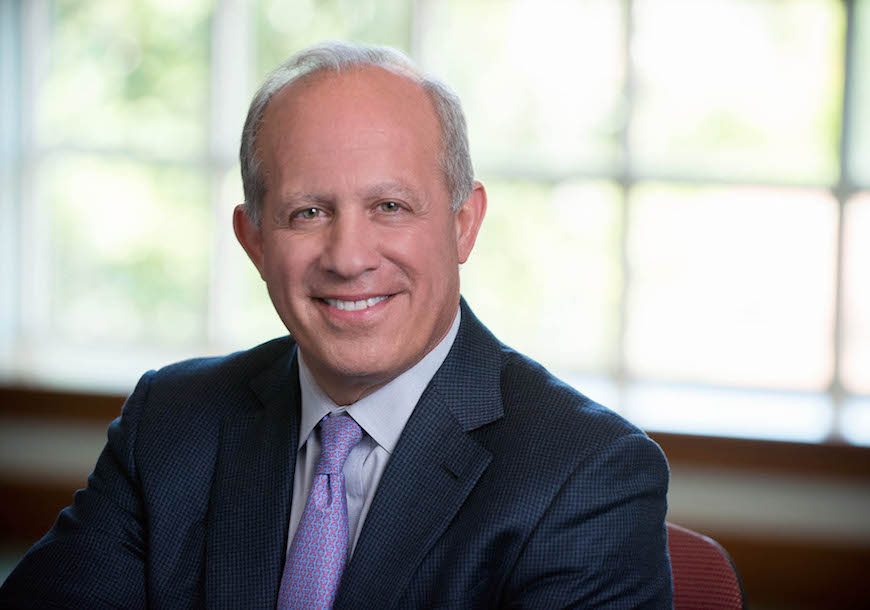
Soon after arriving at Johns Hopkins in 2011, economist Nicholas Papageorge teamed up with sociologist Stefanie DeLuca. Papageorge, a Teach for America alum, was interested in DeLuca’s work in educational psychology and housing and how it could relate to an issue he experienced working in two low-income New York City schools – the low expectations teachers had for their predominantly minority students.
Chuck Clarvit, A&S ’78, a 40-year veteran of the wealth management and finance industries, wants to push forward that kind of research. Clarvit has seen tremendous pockets of wealth consolidated in a small number of hands, but he hasn’t seen those individuals or companies devote much of that wealth to solving some of the intractable problems in our society—including the ever-increasing gap between rich and poor.
“How do we fix things, without simply resorting to calling them ‘Republican’ or ‘Democratic’ problems? We need to find the root causes of those problems, then develop tools and mechanisms that can bring solutions,” Clarvit says.
He believes that establishing two professorships, which will support Papageorge’s and DeLuca’s work, is a good place to start.
“Hopkins is the American institution, in my opinion, that can have the greatest impact on where America and the world are heading,” Clarvit says.
In his many years serving on various Hopkins advisory boards, Clarvit says he’s noticed that the most innovative research often comes not from experienced, tenured faculty but from young professors just starting their academic careers—and that’s what motivated him to establish these professorships.
“This is the sweet spot of putting money to work in people who have real vision and can provide ideas that can, potentially, change the world.”
The Malone Effect
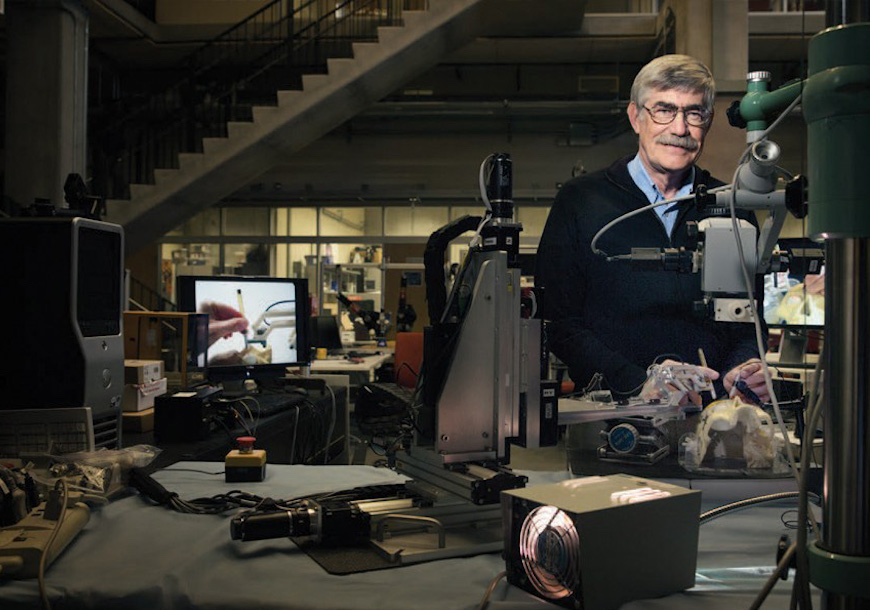
Russell Taylor recalls the many hours he spent as a Johns Hopkins undergraduate writing computer programs in the Eisenhower Library for his adviser, Mandell Bellmore. The programs implemented an algorithm designed by another Bellmore advisee, John Malone. Taylor, Engr ’70, couldn’t have predicted that Malone, Engr ’64 (MS), ’69 (PhD), would one day become his benefactor.
But in 2011, Taylor received the first in a series of professorships endowed by Malone, a pioneer in communications and media and current chairman of Liberty Media Corporation and Liberty Global Inc. The John C. Malone Professorships support faculty whose work crosses the borders of multiple disciplines, particularly engineering and medicine. To date, 10 faculty members have been named Malone Professors. All are part of the new John C. Malone Center for Engineering in Healthcare housed in Malone Hall, whose construction was supported by a previous gift from Malone in 2011.
“The commitment John Malone has made to our faculty through Malone Hall and these professorships ensures that, in partnership with our colleagues in the School of Medicine, we will deliver on our promise to help transform health care and make an impact on patients and systems around the world,” says Ed Schlesinger, dean of the Whiting School.
Taylor has been making that kind of impact for decades. He joined the Johns Hopkins faculty in 1995 after working at IBM’s Thomas J. Watson Research Center for 19 years. There, he led a team that developed the prototype for Robodoc, considered the first surgical assistant robot for major procedures. Taylor has licensed his patents to some of the world’s largest medical robotics companies, and in 2015, he received the Honda Prize for his contributions in medical robotics.
“Engineering culture is very much about solving problems in the world,” says Taylor, who directs both the Engineering Research Center for Computer-Integrated Surgical Systems and Technology and the Laboratory for Computational Sensing and Roboticsat Johns Hopkins. “The constant in my research has been a partnership between physicians and robotics, and the desire to change processes. A lot of my work is focused on getting each individual patient the best intervention.”
Engaging Students in “a Growing Community of Scientists Around the World”
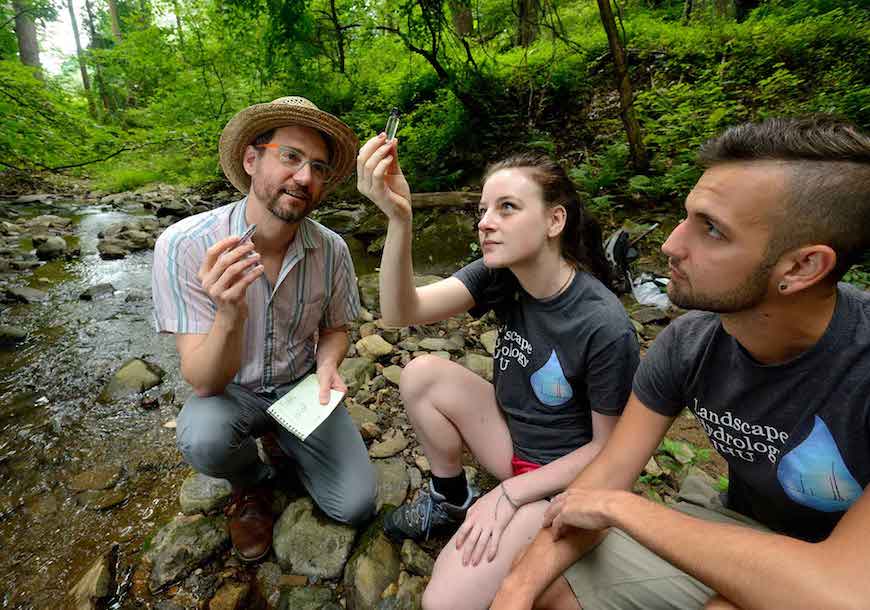
Still waters may run deep, but it’s not the stillness that concerns Ciaran Harman. His Landscape Hydrology lab — part of the Department of Environmental Health and Engineering — concentrates on what happens to water and contaminants as they move through the landscape, and how evolving structures affect that flow.
Funding provided by the Russell Croft Faculty Scholar award — created with a gift to the Whiting School of Engineering from alumnus L. Gordon Croft, Engr ’56 — has enabled Harman to support undergraduate and graduate students who work in his forested study site north of Baltimore.
There, the students collect water samples to estimate how long the water has spent underground. Using tools called amoozemeters, they control and measure the rate at which water percolates through soil and rock. They’ve discovered surprising substructures shaped like bowls underneath the ground. Now, they’re working to find out why those occur.
“Understanding what’s causing these unusual structures will help us better predict how long it will take for the benefits of improved agricultural practices to show up in the water quality entering streams and, ultimately, flowing into the Chesapeake Bay,” he says.
Harman’s research has already been incorporated into the Chesapeake Bay program’s watershed model, an impressive accomplishment for a young researcher. But his relative youth in the field gives him an extra appreciation for the opportunities that the Russell Croft Faculty Scholar award provides him to engage students in this research.
“I’m connecting Johns Hopkins students to a growing community of scientists around the world,” Harman says. “The award affirms for me that Hopkins is committed to the fundamental science of the earth and environment and to understanding their impact on the health and well-being of people.”